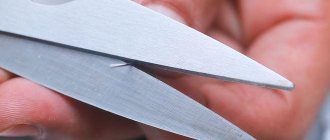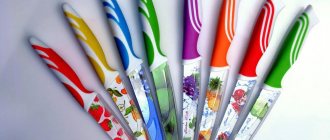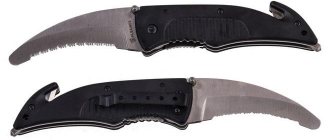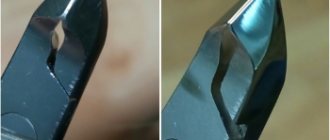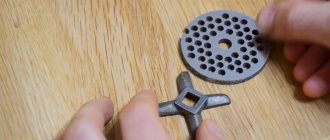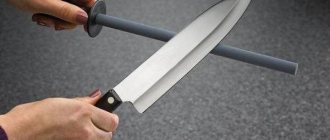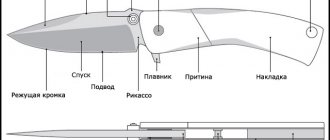join the discussion
Share with your friends
From time immemorial, women have paid special attention to their nails. Every woman, like any master, has a set of special tools with which to create the perfect manicure. Few people know, but the quality of the work performed depends on how well the tools are sharpened. Not only existing tools need sharpening, but also completely new ones. However, it is not always possible to afford sharpening by a professional, then improvised means come to the rescue. This article is worth looking at how to sharpen your manicure tools at home.
Tools that require sharpening
Manicure tongs
Nail clippers are a kind of replacement for manicure scissors. They are also used to shorten nails with a hard nail plate. Nippers differ from wire cutters in size, grip shape and extended blade. When choosing nail clippers, you should pay attention to several details.
- Quality of material. The tongs must be made of stainless steel. This is necessary so that they do not deteriorate during prolonged contact with water. It is advisable to give preference to well-known manufacturers with a good reputation.
- Ideal cutting surface. Under no circumstances buy tongs with gaps, even the slightest. This indicates that the tool is not sharpened correctly.
- Progress. It should not be too tight or too loose, as the quality of work will be reduced and there is also a risk of injury. For example, if the handles bounce sharply, it is easy to get injured.
- Sharpening. The cutting surface must be perfectly sharpened. You can check the sharpening on a thin sheet of paper.
Cuticle nippers
Nippers are a manicure tool that is used to remove excess cuticle, which protects nails from injury and various harmful bacteria. That is why not only the appearance, but also the health of the nails depends on properly trimmed cuticles. Therefore, when choosing wire cutters, there are several things to consider.
- As already emphasized in the description of the tongs, the most important attribute is the material from which they are made. The most practical models are made using special technology from medical stainless steel. They can also be distinguished from other models visually: they have a matte finish. And also such models are more resistant to moisture and other external factors, which helps to increase their service life.
- The cutting surface is of great importance. Under no circumstances should the nippers catch, scratch, or tug the delicate skin of the cuticles. When buying wire cutters, you can test the sharpness on a piece of polyethylene.
- It is very important that the nippers have a comfortable position in your hand. In addition to size, springs play an important role. Today, there are three types of springs for wire cutters: single, double and spiral. Here the type of springs does not matter much, the main thing is that you feel comfortable working with them.
Important! Nippers must undergo a disinfection process after each use.
Tweezers
Tweezers are a tool for manipulating small objects or elements that you do not want to touch with your hands. Tweezers are used in various fields of activity: in medicine, when working with tiny elements, for example, watch repair, when panning for gold, collecting rare items, in cosmetology. Further, tweezers will be considered as a tool for cosmetic manipulations. It has several characteristic features.
- Material. Today, two types of tweezers are known: plastic and metal. Separately, we can distinguish such a variety as automatic tweezers. According to numerous surveys, the fair sex prefers the metal option, citing the fact that it is more durable.
- Form. According to their shape, tweezers can be divided into standard and “scissors”. The standard model is the usual version, consisting of two plates soldered at the top. The “scissors” model got its name from manicure scissors, as they are very similar in appearance. Unfortunately, this model is not particularly in demand. Many simply cannot adapt to it.
- Working surface. There are such options for working surfaces as:
- straight – for working with wide surfaces;
- beveled - great for work, for example, for removing single hairs;
- needle-shaped - used most often in cosmetology and medicine, but sometimes manicurists also use it; it is suitable for placing stones on nails.
Methods
A good craftsman can be identified not only by the work performed, but also by the condition of the tools, namely by sharpening. After all, a sharpened tool allows the master to perform his work efficiently and reduces the risk of injuring the client to a minimum. There are two ways to sharpen tools: give them to a professional or sharpen them yourself. Sometimes it is not possible to turn to a professional sharpener due to lack of time, trust or funds, since the procedure is not the cheapest. In this case, you can try sharpening your tools at home.
What will you need?
If you still decide to sharpen your tools yourself, then you should prepare properly for the process. First, it is recommended to try it on something else so as not to spoil your favorite instruments. For sharpening at home, you may need the following items:
- machine with a diamond-coated wheel;
- felt napkins;
- polishing stones 12000 grit;
- whetstone;
- if you don’t have the time or desire to tinker with all this, you can try a diamond-coated knitting needle; For home stitching, a knitting needle with the finest abrasiveness is suitable;
- sandpaper.
How to sharpen at home?
Sharpening tools at home includes the following steps:
- before sharpening, you need to unscrew all the screws, which will avoid breakage and also make your work easier;
- the machine must be operated at minimum speed;
- remember that polishing and grinding cannot do without each other;
- It is undesirable to use polishing stones with an abrasive less than recommended (less than 8 thousand grit), as this may cause the tool to malfunction;
- you should know that any tool has its own sharpening angle, so when manually stitching there is a possibility that the cutting function will be damaged if the correct angle is not maintained;
- if it is necessary to sharpen the corners of the tweezers, you must be extremely careful, since one awkward movement and the cutting edge can change, which will make the tool unusable;
- do not forget about your own safety; mask, glasses, gloves - this is the minimum set that you should provide yourself with when working with tools at home.
It is worth considering an approximate action plan for sharpening nail scissors at home, which includes the following steps:
- inspect the scissors - it is advisable to unscrew them to make it easier to work;
- turn on the diamond-coated wheel at minimum speed, walk the cutting part around the circle strictly in one direction, repeat the procedure again and wipe the blade;
- assemble the scissors, sand the edges of the assembled scissors;
- polish the cutting surface with a polishing block or napkins.
Other instruments are sharpened in a similar way. And to polish the tweezers, you will need sandpaper. To do this, we run the sharp part of the tweezers along the sandpaper on both sides, then use polishing cloths to smooth out overly sharp edges, disinfect and that’s it - you can safely use it. Having completed all the necessary manipulations, it is necessary to check the quality of the work performed. This can be determined in the following ways:
- make sure that the edges of the tongs and wire cutters are smooth and even;
- make sure that there is no gap between the cutting parts;
- tug the tool in your hand and make sure that all the screws are securely fastened.
Checking the sharpness
Professional craftsmen have their own proven methods for determining the sharpness of a tool required for a job, but there are universal methods that absolutely everyone can use. So, sharpening cuticle cuticle nippers is necessary if the tool cannot cut polyethylene thinly, evenly and without effort. After such an experiment, the presence of torn sections indicates similar trauma to the skin during work, so such tweezers should not be used.
In addition, the complete serviceability of the nippers is indicated by the absence of clicks during operation, the tight fit of the cutting blades in the area of the nose, with light pressure and strong compression, as well as the smoothness of movement.
The sharpness of nail clippers is checked by cutting the electrical tape. The cuts must also be smooth, the cutting blades meet tightly along the entire length, and when pressed, a characteristic click is felt.
The sharpness of manicure scissors for cuticles and nails is checked by similarly cutting polyethylene or electrical tape. A scraper is an equally important tool in the set - when working with a nail, it should slide along its surface without catching the top layer.
Useful tips
To ensure that your favorite instruments last as long as possible, you should adhere to the following rules:
- use tools only for their intended purpose;
- monitor the condition of the cutting surface, sharpen if necessary;
- disinfect after each use;
- Do not store tools in places with high humidity;
- Tools should be stored in special cases or in silicone attachments.
Important! Tools must be stored in places inaccessible to children.
To learn how to sharpen manicure tools at home, watch the following video.
Sharpening manicure tools is a very important process. This is especially true for those tools that have just been purchased, because it is not a fact that tweezers, nippers or other manicure tools were carefully sharpened at the manufacturer’s factory. Sharpening is also necessary for those manicure accessories that are used for a long time, since over time they can wear down and become dull. That's why at one point you may need to sharpen your manicure tools.
The easiest way to sharpen nail clippers at home and ruin them
If you've already looked through the Internet a little, you've probably come across the same type of popular advice on sharpening manicure tweezers. We will tell you about them right away so that you understand what not to do and why.
Sharpen manicure tools using foil or sandpaper
The advice goes like this: take the foil, fold it in several layers and make several cutting movements with scissors or tweezers. It’s the same with emery, only it needs to be folded in half, with the rough side out.
So, never use this method! The short-term sensation that the scissors have become sharper comes from the fact that the serrations on the cutting edge are being ground. Ultimately, the sharpening angle will change so that no craftsman will be able to restore the tool.
Want a clearer argument? Imagine a dull knife. Will cutting the foil at a 90 degree angle help sharpen it? No, on the contrary - the knife will become dull! To sharpen a knife, a sharpener is used at a certain angle to change the shape of the cutting edge. The scissors also need to be adjusted to the correct angle.
Advice. It is important to maintain the correct sharpening angle - for manicure scissors from 45 to 69 degrees.
How to sharpen nail clippers and say goodbye to them
Among the tips on how to sharpen nail clippers at home, in addition to foil and emery, it is recommended to use a regular whetstone. Any hardware store sells this. The grain size of a 50 ruble bar is not suitable for straightening and sharpening manicure tools. The whetstone will leave rough marks on the cutting surface of the nippers or scissors, which will be difficult for even an experienced craftsman to get rid of later.
We recommend that you learn how to properly iron a pleated skirt at home.
Cleaning a microwave is not a cumbersome process at all. You can find out how to quickly clean a microwave here.
The only suitable option is a fine-grained stone or a diamond-coated grinding wheel.
What types of sharpening exist?
Today there are only two ways to sharpen manicure tools:
Of course, hand sharpening is much better than factory sharpening or, as it is also called, container sharpening. Factory-sharpened tools, as a rule, do not last a long time, and their blades do not cut along their entire length, since they are sharpened differently and are not very sharp. But even if, when purchasing manicure tools that are factory sharpened, they suddenly turn out to be very sharp, this does not mean at all that they will remain so after several times of use.
Manual sharpening of manicure tools is a real art that requires diligent attention and, of course, perseverance, as well as confident movements. The manual sharpening process takes place using a special sharpener, which is equipped with a diamond-coated metal wheel.
How and with what to check the sharpening level
Even a professional manicure cannot be done with a blunt instrument. That is why regular maintenance of tongs, scissors, and tweezers is necessary. With a large flow of clients in the salon, maintenance of scissors and cutters may be required once every two to three weeks. With a lower flow - much less often.
To understand when it's time to sharpen your manicure tools, there are a number of simple tests. They will require the following materials to choose from:
- Thin plastic bag
- Stretch film
- Dried wet wipe made of non-woven material
- Elastic vinyl, latex or nitrile gloves
These same tests will allow you to check the quality of the work performed by the master. In the workshop, these tests are used to check each of the processing stages of blades and cutting edges.
Methods and instructions on how to check the quality and level of sharpening:
- We fix the thin plastic bag so that the edge is even. Unclench the scissors, tongs or wire cutters, place the edge of the bag between them, and close along the entire length. The blades should not tear, snag or pull the polyethylene.
- Stretch film is the most demanding material for checking the level of sharpening. The principle is the same - we fix the film and close the blades along its entire length. The cut should be smooth.
- A napkin made of non-woven material demonstrates well the presence of burrs on metal. With high-quality processing, the cut is smooth, without snagging on the blade.
- Vinyl or nitrile gloves should be secured between the thumb and forefinger, the cutting edges should be completely opened and closed, placing the glove sheet between the blades, and then pulled down slightly towards you. Often scissors or tongs cut well at the base, but the closed edge pulls the glove and tears it. This means it's time to sharpen the blades again.
Sharpening tools at home
Most modern women do their own manicure at home, because going to the salon takes quite a lot of time. But what if, during a manicure, your favorite scissors or the nippers began to painfully pull on the skin? Of course, you can take them to a special workshop and there they will be restored to their former sharpness, but you can sharpen your favorite manicure accessories at home. To do this, you need to have a few things on hand:
- A whetstone used to sharpen kitchen knives;
- Sandpaper;
- Foil
- Napkin;
You can sharpen manicure tools quite quickly. You just need to take a sharpener for kitchen knives, open the tongs, wire cutters or scissors as wide as possible and carefully begin sharpening them. The main rule when sharpening is smoothness; you should not make very sudden movements.
Sharpening features
If a manicure tool still needs help, throwing it away right away and buying a new one is too expensive. In addition, its standard metal plates can be put in order yourself. At first glance it seems easy. In reality, sharpening nail clippers at home is a very complex and time-consuming process, requiring a certain amount of experience and skill. The fact is that such a device can cut poorly not at all because of the dullness of the blades, but because of their loose fit.
Play in a tool joint can occur from a fall, impact, or during production at a factory.
Interestingly, the intricacies of eliminating these problems are not taught in any courses. Experienced professionals know how to deal with such damage thanks to their own experience. That is why it is best to trust the repair of “little helpers” to professionals in their field.
Equipment for professional sharpening
Any master who constantly sharpens manicure tools has special equipment for this. As a rule, only two types of machines are used in this matter:
The easiest way to sharpen is on a laser machine, but it also has its drawbacks. With such sharpening, the risk of wear on the blades of the tool increases. During operation, the laser beam greatly removes the thickness of the metal and therefore it becomes brittle.
Sharpening on a mechanical machine is a little more difficult than on the previous one, but, nevertheless, it maintains the strength of the tool and does not shorten its service life.
Manicure is very important for most people and therefore should be taken very seriously. First of all, you should select only high-quality tools for working with nails and take their choice seriously. After all, the health of your nails and skin depends on what tools you use to perform your manicure. That is why it is best to purchase only professional accessories or tools from well-known brands. Well, of course, you need to pay attention to the sharpening of tools in order to ensure comfortable and convenient work.
That unfortunate hour has come when you no longer rejoice at buying brand new manicure scissors, but lament over them. The previously sharp, blade-like working edges became dull and stopped performing their tasks efficiently, causing more discomfort than benefit. So what should you do - throw away the careless tool or do the wiser thing by modifying it? We think the answer is obvious. Prostonail experts will tell you how to sharpen nail scissors at home and what you will need for this.
Professional work
In big cities, finding a workshop for sharpening manicure tools is not a problem. Professional craftsmen necessarily use in their work several machines for sharpening nail clippers, lamps with different lighting, lubricating compounds and many other devices.
Large workshops even accept wholesale orders for tool sharpening from salons, and the quality of their work should not change.
It is difficult to find good professionals in small towns. As a rule, there can be one master for the entire settlement, and sometimes you have to go to a neighboring city to get his services. The lack of competition often makes it possible to perform poorly. In such situations, you can find the best master nearby and ask him for training, or use your own experience and the advice below to try to sharpen the tools yourself.
Preparatory work before sharpening
Surely housewives have more than once noticed the fact that a dull knife can cut faster than a sharp one. The situation is approximately the same with blunt manicure instruments. Having bought a treasured set in a leather case once, you should not rely on its professional suitability for a long period of time. Even if you use your favorite tweezers exclusively for personal purposes, after 6 months they will become unusable. It is not so difficult to distinguish a tool that requires sharpening; the main thing is to be guided by the following indicators:
- partial tarnishing and speckling on the working surface of the edges;
- change in the density of the metal itself;
- deterioration of the cutting ability of the accessory;
- chips along the length of the working edges, interfering with the process of removing the cuticle.
Have you noticed anything from the list on your instrument? Then we recommend that you start sharpening it without putting the matter in a dark drawer, otherwise you risk the condition of the device being too neglected and after that only a professional grinder who does ultra-strong spraying will be able to help you. The main thing is not to confuse the change in cutting characteristics due to dullness with untwisted play. The backlash is an iron bolt that connects the scissor structure. If it “squirms” and does not sit tightly in the hole, then you just need to “tighten” it using a universal screwdriver.
Well, it's time to choose a material that will help you sharpen your manicure scissors. Of course, if the procedure takes place at home, then it is unlikely that you will find a diamond stone in your arsenal. There is no need to panic, ProstoNail specialists know at least a few more alternatives to this toiletry case:
- sandpaper. Surely every housewife will have a small piece of sandpaper. Sandpaper is easy to maneuver, the main thing is to choose the material with the greatest abrasiveness;
- aluminium foil. Sold everywhere: in supermarkets and household goods, in ordinary local shops and large construction hypermarkets. We are sure that a roll of foil has found its way into your kitchen;
- grindstone. Most likely, the probability of finding it in the apartment of the average city dweller is extremely low, but why not try your luck?
- glass jar. Enterprising beauties do not throw away bottles for preservation, but carefully store them somewhere on the mezzanine. Finally it was their turn. Feel free to take out glass jars with a small neck and get to work;
- pins and/or needles. Such a simple object can be found even in the home of an avid bachelor, let alone girls. A very functional thing, isn't it?
- diamond circle. Last but not least option. This is a classic device that helps to effectively, quickly and efficiently sharpen any steel or metal tool, including cuticle scissors.
Signs of a dull instrument
Typically, a blunt tool has jagged edges; sometimes of scissors and wire cutters differ The tips and cutting edges become so thick that it is almost impossible to grip the skin or remove an ingrown toenail.
The frequency of sharpening depends on how often you use the manicure set. Usually the need for it occurs once every 2-6 months .
This video will tell you how to sharpen nail clippers:
How to sharpen nail scissors at home
Of course, the easiest and at the same time the most effective way to sharpen tools is to take them to a master who will carry out this procedure professionally. But the price for his services is often not at all budgetary, so girls resort to independent methods of solving the problem. We are not advocating for either the first or the second option, we’ll just say: if you are confident in your own abilities, then carefully read the algorithm of actions presented below. If you doubt your personal skills, then leave these manipulations to the pros.
For those beauties who dared to undertake such a home experiment, we offer several sharpening methods. Choose the one you like and go ahead:
- sharpening scissors with a sheet of sandpaper. Perhaps one of the simplest methods of sharpening. You will need a small piece of sandpaper used for household purposes, as well as the tool itself. Having rolled up the sandpaper in two layers, start cutting it, trying to capture the entire area of the sharp edge. With each movement you make, the sharpness of the tool will increase, and the amount of effort applied will decrease. Upon completion of manipulations, wipe the scissors with a damp cloth to remove metal shavings;
- Sharpening nail scissors with foil is also not as difficult as it seems at first glance. Taking a piece of roll into service, roll it several times. Next, repeating the movements of the schoolchildren during the appliqué lesson, cut thin strips, pressing the blades harder every time. Complete the procedure by wiping the scissors with alcohol and enjoy their original sharpness;
- The lucky ones who have a sharpening stone at home will have the hardest time of all. Alas and ah, this is the truth of life. But, in fairness, we note that this method of sharpening is the most effective. Use the coarse-grained side of the stone to begin with, and then finish with the fine-grained abrasive. To make everything go as quickly as possible, prepare the scissors in advance by unwinding their design. This is done by unscrewing the central gap connecting the 2 parts of one whole. Now you need to place one of the blades with the inner flat side (which is usually in contact with the other half of the scissors) on the whetstone. Next you need to choose the right angle at which to sharpen the blade. A dozen repeated movements will be enough to complete the job. To ensure that the tool is sharp enough, you can mark the sharp parts of the blades with a felt-tip pen before starting sharpening. If after the procedure the marks are erased, it means that the scissors are sufficiently sharpened. The test can also be carried out on a piece of polyethylene; if they do not crumple it and cut it easily, then the cutting edges are sharp enough;
- Sharpening nail scissors with a needle is a doable task even for a clumsy beginner. Take a brooch, a pin or a classic steel needle and use scissors to imitate “cuts” on it, making progressive, smooth movements. Carefully watch the blades to avoid injury and do not forget to wipe them with a damp cloth when finished;
- sharpening using the neck of a glass bottle occurs according to the principle described above.
As you can see, the sharpening process is not so complicated, but painstaking. But the result from the efforts made will definitely not leave you indifferent. Well, in order to extend the life of your instruments, it is enough to adhere to a few basic rules for caring for them:
- do not forget to clean the instrument from excess decorative gel coating or epidermal residues after each use;
- do not neglect banal lubrication. Even ordinary oil can be used for this purpose; it should be applied to friction points;
- Do not use manicure tools for purposes other than their intended purpose. Of course, sometimes you want to cut paper or a piece of fabric with nail scissors, but this will only make them dull or even break;
- remember that there is only one correct option for storing manicure tools - in a high-quality, waterproof, durable case and in a horizontal position.
By using our life hacks and adopting some tips, you will significantly extend the life of your favorite manicure accessories so you can create thousands more incredible designs on your nails.
